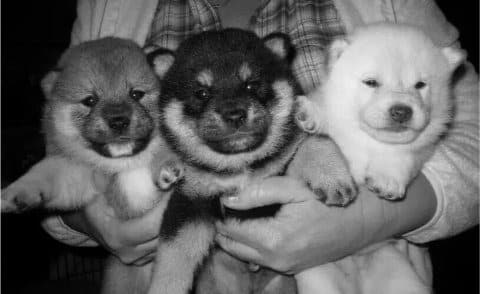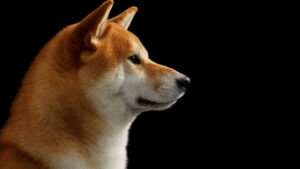
The Shiba Inu
Explore the independent and charming nature of the Shiba Inu, a small yet bold breed with a fascinating history.
Home » Meet The Breeds » Shiba Inu
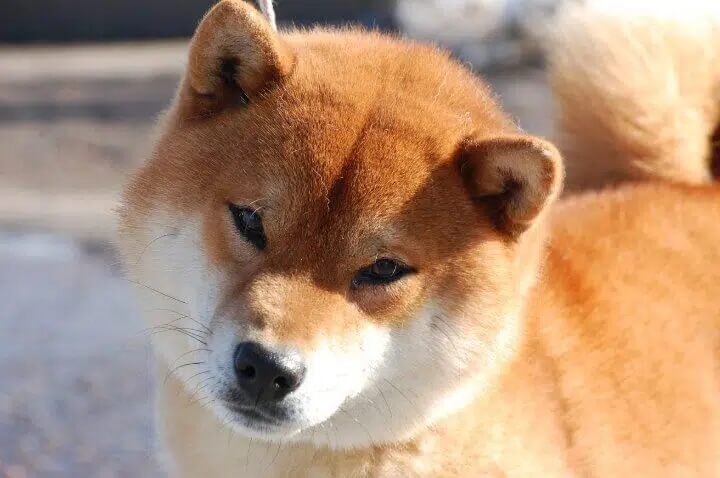
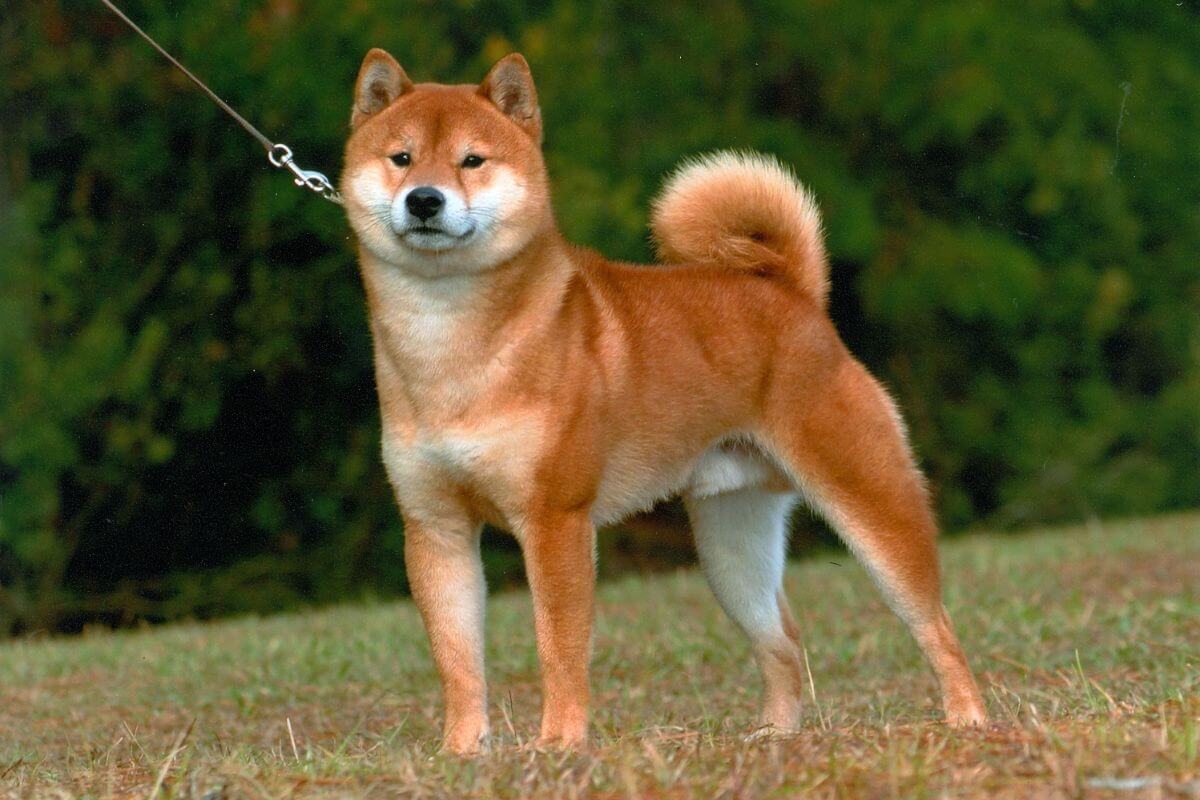
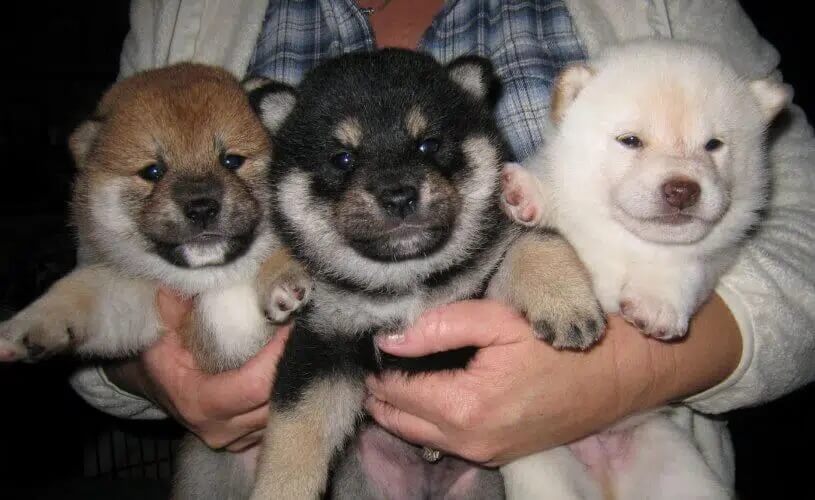
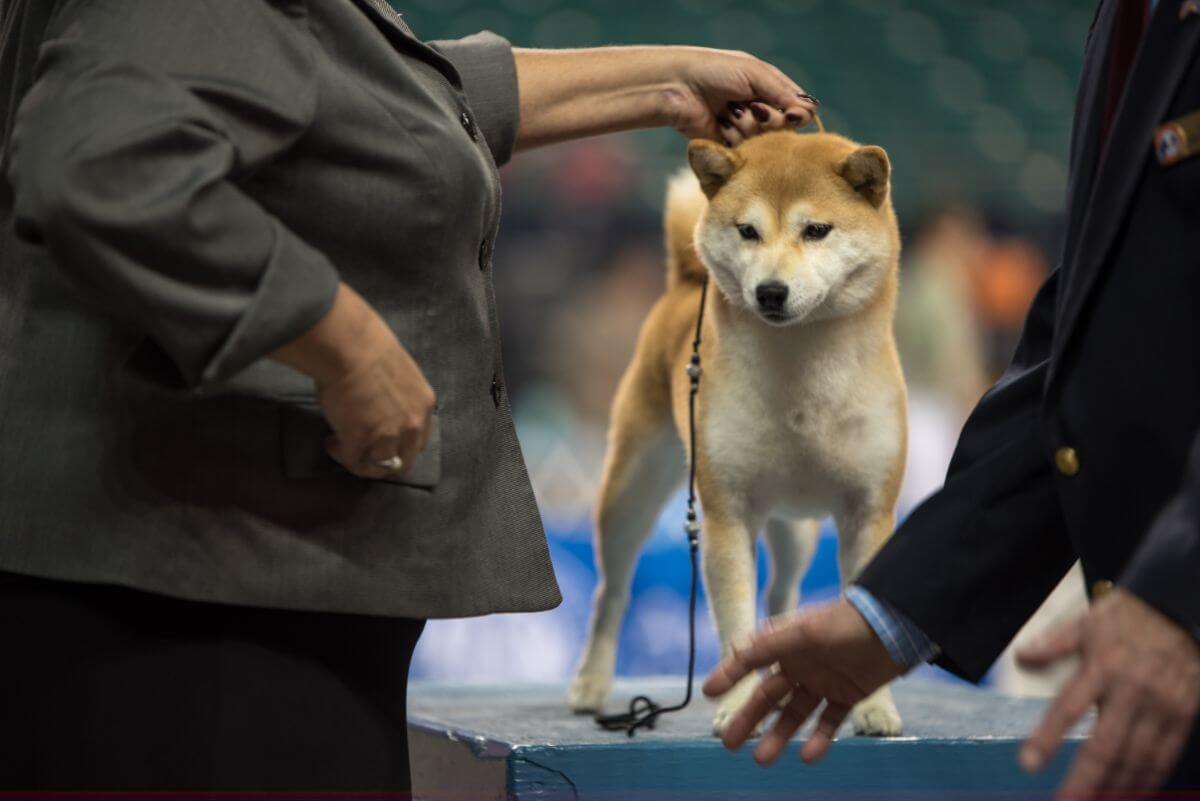
The Shiba Inu, or Shiba, a small but spirited breed, hails from Japan where it has been admired for centuries for its hunting prowess, keen alertness, and boldness of spirit. This breed, distinguished by its fox-like appearance, captures hearts with its combination of endearing charm and dignified independence. Originally bred to hunt by sight and by scent, the breed has evolved into a beloved companion, well-suited to both suburban and urban settings.
Non-Sporting
13.5 – 16.5 inches
17 – 23 pounds
13 – 16 years
| Country of Origin | Japan |
|---|---|
| Bred For | Small Game and Bird Hunting, Companionship |
| Known For | Curly Tail, Boldness, Alertness |
| Popularity | Moderate |
| Temperament | Alert, Active, Attentive |
| Activities | Walking, Hiking, Watchdog, Conformation Shows, Dog Sports |
The Shiba Inu boasts a rich and storied history, deeply rooted in the cultural heritage of Japan. Considered one of the oldest and smallest native dogs of Japan, its ancestry dates back several thousand years, possibly to around 7000 BC with the earliest immigrants to Japan. Small dogs within the 14 1/2 to 19 1/2 inch range were discovered in archaeological excavations of the Jomonjin or Rope-Pattern People, indicating the presence of early ancestors of today’s Shiba.
Initially bred for hunting in Japan’s mountainous areas, the Shiba Inu was adept at flushing out small game and birds and was occasionally used to hunt wild boar. The third century BC saw new immigrants bringing their dogs to Japan, which interbred with the Jomonjin dogs, resulting in canines with pointed, erect ears and curly or sickle tails.
The breed’s name, “Shiba,” is thought to mean “small” or “brushwood” in Japanese, possibly referring to the brushwood bushes where they hunted or to the fiery red color of the Shiba which matches the autumn color of brushwood leaves. The term “Inu” simply means “dog” in Japanese.
During the 7th century AD, the Yamato Court emphasized the importance of native breeds in Japanese culture by establishing an official department dedicated to the preservation and maintenance of dogs. This initiative highlighted the value placed on canine breeds within the societal framework of Japan. Despite Japan’s isolation from the 17th through the 18th centuries, the introduction of some European dogs and the Chinese Chin occurred, leading to their interbreeding with native dogs in more populated areas. However, in the rural areas, the canine population remained relatively untouched, preserving the purity of native breeds.
Originally, there were three main varieties of Shiba from different regions, contributing to the breed variations seen today. These, along with other Japanese native dogs, led to the development of six distinct breeds categorized into three sizes:
The Shiba Inu’s history faced a significant challenge during World War II, with many perishing in bombing raids or from distemper in the post-war years. While the Mino and Sanin Shibas became nearly extinct, more of the Shinshu Shibas survived. Post-war, Shibas from remote areas were brought in, and breeding programs combined the remnants of various bloodlines to create the breed as known today.
The breed was officially recognized in Japan in 1936 and declared a national treasure, signifying its importance in Japanese culture and heritage. The American Kennel Club (AKC) recognized the Shiba Inu in 1992 and added it to the AKC Non-Sporting Group in 1993. This recognition not only established its presence in the United States but also marked a significant milestone in its global recognition. Additionally, the Shiba Inu is recognized by the Fédération Cynologique Internationale (FCI) and The Kennel Club (UK), further cementing its status in the canine world.
Today, celebrated for its spirited personality, fox-like appearance, and adaptability, the Shiba Inu is a beloved pet worldwide. Its history, from a skilled hunting companion to a treasured family member, highlights its resilience and enduring appeal.
In terms of height and weight, an adult male Shiba Inu generally stands about 14.5 to 16.5 inches tall at the withers, while a mature female is slightly smaller, typically ranging from 13.5 to 15.5 inches in height.
Weight-wise, a well-proportioned male Shiba usually weighs around 23 pounds, and a female tends to weigh about 17 pounds.
The Shiba Inu is a study in balance and proportion, boasting a symmetrical and sturdy build that reflects both agility and strength. This breed is characterized by its well-developed muscles and moderate bone, giving it a rather robust and hardy appearance for its size. In males, the ideal height-to-length ratio is 10 to 11, with females being slightly longer. These proportions contribute to the breed’s distinctive, compact look that is masculine in males and feminine in females.
The breed’s overall substance should convey a sense of strength, yet not to the extent of appearing heavy or cumbersome. This careful balance in proportions is a hallmark of the breed, emphasizing its functional heritage and aesthetic appeal.
Texture: The coat of the Shiba Inu features a double layer, essential for its adaptability to various climates and conditions. The outer coat is stiff and straight, providing a layer of protection, with a soft and dense undercoat that offers plenty of insulation. The guard hairs are 1.5 to 2 inches long and stand off from the body, longer on the tail and shorter on the face, ears, and legs.
| Standard Color | |
|---|---|
| Black & Tan | ee |
| Cream | ee |
| Red | ee |
| Sesame | ee |
A Note About Color: The color of the Shiba Inu’s coat can be red, red sesame, or black and tan, with an undercoat that’s considered cream, buff, or gray. “Urajiro” markings of cream or white appear in each color on the sides of the muzzle and on the cheeks, underjaw, upper throat, inside of the legs, on the abdomen, around the vent, and on the ventral side of the tail. Additional markings are specific to each of the three colors, and all colors should be clear and intense.
| Standard Marking | |
|---|---|
| White Markings | ee |
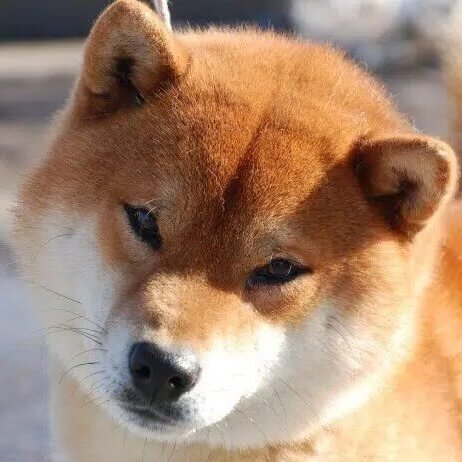
A significant aspect of the Shiba Inu’s appearance is its tail. The breed sports a high-set tail that is thick at the root and powerfully carried over the back in a sickle shape or curl. Single curls are preferred over double curls. This characteristic tail not only adds to the breed’s distinctive silhouette, it also serves as a sign of the dog’s good health and vigor. The way the tail is carried and curled over the back can vary among individuals, but it always adds to the Shiba’s poised and spirited appearance. Whether in motion or at rest, the tail is an expressive feature, conveying the breed’s energetic and confident nature.
Owning a Shiba Inu offers a unique and rewarding experience, but it also requires an understanding of the breed’s specific needs and characteristics. Known for their independence, intelligence, and strong personality, Shibas can be a delightful addition to the right home. However, they demand an owner who appreciates their distinctive traits and can provide the structure, training, and care they need. It’s essential for potential Shiba Inu caretakers to consider these factors to ensure a harmonious and fulfilling relationship with their canine companion.
The Shiba Inu is generally a healthy and hardy breed, possessing a well-built physique and a strong constitution. Despite this, as with any breed, there are certain health issues that prospective owners should be aware of. Being informed about these potential health challenges and maintaining a proactive approach to their Shiba Inu’s health can significantly contribute to the dog’s overall well-being and longevity.
On average, Shiba Inu has a lifespan of 13 to 16 years. To support a healthy and long life, regular veterinary check-ups, a nutritious diet, and sufficient exercise are crucial.
Shiba Inu, like any breed and mixed breed, is susceptible to certain health conditions. Potential health risks for this breed include:
Regular veterinary check-ups and being alert to the early signs of these conditions can help ensure a Shiba Inu’s long-term health and well-being.
The personality of a Shiba Inu is a unique blend of independence, intelligence, and loyalty. These dogs often display a cat-like demeanor, being both clean and self-sufficient. When it comes to novice owners, Shibas can present a challenge due to their independent nature and strong will. They are not as immediately eager to please as some other breeds, which means they require a handler who understands canine behaviors and is patient and consistent with training.
In terms of sensitivity, Shibas have a moderate level. They respond well to positive reinforcement but can become stubborn if treated harshly. Their ability to be alone is better than many other breeds, as they value their independence, but this doesn’t mean they should be left alone for prolonged periods.
When interacting with other dogs, they can be somewhat aloof, especially if not socialized from a young age. This trait also extends to their interactions with young children. While a well-socialized Shiba Inu can coexist peacefully with children, their independent nature means they might not tolerate invasive behaviors from kids.
Regarding their disposition towards strangers, Shibas tend to be reserved. They are not immediately trusting of strangers and can exhibit a cautious demeanor around new people. This makes them excellent watchdogs, as they are always alert and observant.
Feeding a Shiba Inu requires attention to their specific dietary needs at different stages of life. As puppies, Shibas have high energy needs and benefit from a diet that supports their rapid growth and development. Puppy-specific formulas, rich in protein and essential nutrients, are ideal for this stage. It is generally advisable to feed them small, frequent meals throughout the day to support their metabolism and growth.
Transitioning to adulthood, a Shiba Inu’s diet should be adjusted to maintain a healthy weight and support their activity levels. Adult Shibas typically do well with two meals per day. The amount of food, often measured in cups, varies based on the dog’s size, age, and activity level. A moderate amount, typically around 1 to 1.5 cups of high-quality dry dog food per day, divided into two meals, is usually sufficient for the average adult Shiba Inu. However, this can vary, and it’s important to consult with a veterinarian to determine the specific nutritional needs of your dog.
Overfeeding can lead to obesity, which is a concern for the breed. Shibas are known for their agile and lean physique, and maintaining an appropriate weight is crucial for their overall health. Monitoring their diet, alongside regular exercise, ensures they stay in optimal condition.
Training a Shiba Inu presents a unique set of challenges and rewards, primarily due to their intelligent yet independent nature. These dogs are known for their sharp minds, which means they learn quickly, but their independent streak can sometimes make them seem less eager to please compared to other breeds. This characteristic can be particularly noticeable in training sessions, where a Shiba Inu might display selective listening or a seemingly stubborn attitude.
Despite these traits, with the right approach, Shibas can be effectively trained. Positive reinforcement techniques, such as using treats and praises, work well. It’s important for their human companions to establish themselves as the pack leader early on, fostering a relationship based on mutual respect and understanding. Consistency and patience are key in training sessions.
As for their tendency to bark, Shibas are generally not excessive barkers. They do vocalize, especially when they have strong feelings about a situation, but they are not known for needless barking. Their intelligence also lends them a certain level of awareness about when to vocalize.
Shibas have a moderate wanderlust potential. While they can be curious about their surroundings, they are also territorial and tend to stay close to their home environment. However, their hunting instincts can sometimes kick in, leading them to chase after small animals. Therefore, a secure, fenced yard and leash training are important.
In regards to predation, Shibas do have a higher prey drive due to their hunting background. It’s crucial to manage this instinct, especially in homes with other small pets. Early socialization and training can help mitigate some of these predation tendencies, but it’s important to always be cautious in situations where small animals are present.
Exercise is a fundamental aspect of a Shiba Inu’s daily routine, pivotal for maintaining their physical health and mental well-being. These dogs possess a good amount of energy and require regular, moderate exercise to keep them fit and content. Daily walks, coupled with some playtime, provide an excellent outlet for their energy. It’s important to remember that while they are energetic, they do not typically require the intensive exercise that larger, more athletic breeds might need.
| Energy Level | Moderate |
|---|---|
| Exercise Requirements | 40 Minutes/Day (Minimum), Daily Walks, Vigorous Running, Regular Exercise, Playing with Another Dog, Mental Stimulation |
In terms of intensity, a Shiba Inu’s exercise regime should be consistent but not overly strenuous. They enjoy activities that stimulate both their body and mind. This could include activities like brisk walking, running, fetching games, and agility exercises. Given their intelligence and curiosity, mental stimulation exercises, such as puzzle toys and hide-and-seek games, are also beneficial in keeping them engaged and content.
Playfulness is a charming aspect of Shiba Inu’s character. They often display a joyful and spirited demeanor during play, which can be a delightful experience for both the dog and their human companion. Engaging in regular play sessions not only strengthens the bond between the dog and their caretaker but also ensures that the dog’s playful needs are met.
When it comes to living environments, Shibas can adapt well to various settings as long as their exercise needs are met. Whether it’s a house with a yard or an apartment, providing daily exercise opportunities is crucial. An important note for Shiba Inu owners is the necessity of a secure area for off-leash play, as their prey drive can lead them to chase after small animals if not properly supervised.
Grooming a Shiba Inu is a task that blends simplicity with regular commitment. These dogs have a double coat, consisting of a soft undercoat and a stiffer, straighter outer coat. This combination requires regular grooming to maintain their coat’s health and appearance, although they are not as high-maintenance as some other breeds with longer or more intricate coats.
| Coat Type | Double, Straight, Stiff |
|---|---|
| Grooming Requirements | Weekly Brushing, Occasional Bathing, Routine Ear Cleaning, Periodic Nail Trimming, Regular Tooth Brushing |
Shibas are known for their cleanliness and often engage in cat-like grooming behaviors. However, they do shed, particularly during the shedding seasons in the spring and fall. During these times, more frequent brushing is beneficial to help remove loose fur and minimize shedding around the house. Outside of these shedding seasons, a weekly brushing routine is typically sufficient to keep their coat in good condition.
As for the ease of grooming, their short coat does not require professional grooming services as often as other breeds might. Regular brushing, along with basic grooming practices like nail trimming, ear cleaning, and dental care, can be efficiently handled at home.
Shedding can be a notable aspect of living with a Shiba Inu, especially during the peak shedding seasons. While they are not heavy shedders year-round, the amount of fur they lose during these periods can be significant. Regular grooming during these times can help manage the shedding.
Living with a Shiba Inu can be a delightful experience, but it’s important to consider their unique temperament and environmental needs. These dogs are adaptable and can thrive in various living situations, including apartments, provided their exercise needs are met. However, a key consideration for apartment dwellers is the Shiba Inu’s tendency to be vocal, which might require additional training to manage.
In terms of weather adaptability, the Shiba Inu fares well in both cold and hot climates due to their double coat. The undercoat provides insulation against the cold, while the outer coat helps to protect them from the heat. However, extreme temperatures should be avoided, and it’s important to provide adequate shelter, hydration, and temperature control to ensure their comfort and safety in harsh weather conditions.
A Shiba Inu’s independent nature means they can be left alone for moderate periods, but like all dogs, they should not be left isolated for too long. Prolonged periods of solitude can lead to boredom and potential behavioral issues. Ensuring they have adequate toys and mental stimulation when left alone can help mitigate this.
A fenced yard is highly beneficial for a Shiba Inu, as it allows them a safe space to explore and play. However, their cleverness and agility mean that fences should be secure and high enough to prevent escape attempts, as they can be quite adept at finding ways to wander.
Finally, living with a Shiba Inu requires understanding and patience, especially regarding training and socialization. They respond best to positive reinforcement techniques and need consistent, patient training to bring out their best qualities. Early socialization is crucial to help them develop into well-adjusted adults, comfortable in a variety of settings and situations.
Welcoming a Shiba Inu puppy into your home is an exciting and rewarding journey. These puppies are known for their spirited personality, intelligence, and adorable appearance. However, prospective owners should be prepared for the responsibilities that come with raising a Shiba Inu puppy, ensuring they grow into well-adjusted and healthy adult dogs.
Caring for a Shiba Inu puppy requires attention to their physical, mental, and emotional development. Early socialization and training are crucial for this breed. Introducing your Shiba Inu puppy to various people, sights, sounds, and experiences positively impacts their personality development, helping them become well-rounded and confident dogs.
Feeding a Shiba Inu puppy a balanced diet specifically formulated for small-breed puppies is essential for their growth and health. Puppies have different nutritional needs compared to adult dogs, so it’s important to follow a feeding guide that suits their age and size. Frequent, small meals are typically recommended for puppies to support their fast metabolism and growth requirements.
Regular veterinary check-ups are important to monitor the puppy’s health and development, including vaccinations and deworming. It’s also essential to start a routine of dental care and grooming from a young age to acclimate them to these practices.
Providing a safe and secure environment is vital for Shiba Inu puppies. Since they are naturally curious and energetic, puppy-proofing your home to prevent any accidents or mishaps is a wise step. Adequate exercise, playtime, and training sessions not only keep them physically fit but also aid in their mental stimulation and behavioral development.
Shibas are active and intelligent dogs that excel in various activities and dog sports. Their agility, alertness, and eagerness to learn make them suitable candidates for a range of disciplines. Participating in these activities not only provides physical and mental stimulation for the dog but also strengthens the bond between the dog and its handler. Here are some activities and dog sports where Shibas can shine:
These activities provide excellent opportunities for Shibas and their owners to engage in fun, rewarding experiences while promoting the physical and mental well-being of the breed. It’s always recommended to start training for these activities under the guidance of a professional to ensure the best outcome for both the dog and the handler.
The Shiba Inu is recognized by the world’s leading registries and kennel organizations, which categorize the breed into a specific Group based on its unique characteristics. This breed is recognized worldwide under the following Group designations:
| Organization | Group Designation |
|---|---|
| AKC (American Kennel Club) | Non-Sporting |
| UKC (United Kennel Club) | Northern |
| CKC (Canadian Kennel Club) | Non-Sporting |
| ANKC (Australian National Kennel Council) | Utility |
| RKC (The Royal Kennel Club) | Utility |
| FCI (Fédération Cynologique Internationale) | Group 5: Spitz and Primitive Types; Section 5: Asian Spitz and Related Breeds |
The ideal Shiba Inu is described by a Breed Standard that is approved by each of the world’s leading registries and kennel organizations. The Breed Standards for this breed may be found in the following links:
| Organization | Breed Standard |
|---|---|
| American Kennel Club | AKC Shiba Inu Breed Standard |
| United Kennel Club | UKC Shiba Inu Breed Standard |
| Canadian Kennel Club | CKC Shiba Inu Breed Standard |
| Australian National Kennel Council | ANKC Shiba Inu Breed Standard |
| The Royal Kennel Club | RKC Shiba Inu Breed Standard |
| Fédération Cynologique Internationale | FCI Shiba Inu Breed Standard |
Shiba Inu clubs play a pivotal role in promoting the breed, providing resources for owners and breeders, and organizing events that showcase the breed’s unique qualities.
In the United States, the National Shiba Club of America (NSCA) is a key organization dedicated to the welfare and betterment of the Shiba Inu. It serves as a hub for breed enthusiasts, offering a wealth of information, guidance, and opportunities to engage in breed-specific activities.
In Canada, Shiba Inu Canada represents the breed, fostering a community of Shiba Inu lovers and providing resources and support for everything from health and training to dog shows. The club also plays a crucial role in maintaining breed standards and promoting responsible breeding practices.
In the United Kingdom, the Japanese Shiba Inu Club of Great Britain is a prominent organization for Shiba Inu enthusiasts. This club is dedicated to the breed, providing valuable resources, organizing breed-specific events, and supporting the welfare and betterment of Shibas in the UK. Through its efforts, the club plays an essential role in maintaining breed standards and promoting responsible ownership and breeding practices.
These clubs not only act as valuable resources for existing and prospective Shiba Inu owners but also play a crucial role in protecting and preserving the breed’s characteristics and health. Through education, community events, and support networks, they help ensure the continued popularity and well-being of the Shiba Inu breed.
Shibas sometimes find themselves in need of new homes due to unforeseen circumstances, such as owner illnesses, financial hardships, or behavioral challenges. Rescue groups rise to the occasion, ensuring that these loyal companions find loving forever homes, while also providing education to potential adopters.
In the United States, several organizations focus on rescuing and providing care for Shibas in need. These groups, such as Shiba Inu Rescue Association and NYC Shiba Rescue, work tirelessly to ensure that these dogs receive the necessary care and find loving forever homes. They also offer support and education to current and prospective Shiba Inu caretakers.
It’s important to note that while breed-specific rescue groups play a critical role in supporting Shibas in need, local shelters and animal rescues may also have Shibas available for adoption. Adopting a Shiba Inu through these channels can also make a significant difference in the life of a dog in need.
Shiba Inu does shed, and the breed is known for its substantial shedding twice a year during their shedding seasons. These seasons are commonly referred to as “blowing” their coat, where they shed their undercoat in large quantities. Regular brushing can help manage this shedding, but potential owners should be prepared for a fair amount of hair during these periods.
Shibas are not hypoallergenic. Like many breeds, they produce dander and shed fur, which are common allergens for many people. For individuals with dog allergies, a Shiba Inu may not be the best choice due to their shedding and dander.
Shibas can be good family dogs, but they have a distinct personality that requires understanding. They are known for being independent and sometimes aloof, but they can also be affectionate and loyal to their family. Early socialization and consistent training are key to helping them fit well into a family setting.
Shibas can be good with other dogs, especially if they are socialized from a young age. However, they have a strong personality and may exhibit dominance or territorial behavior. Proper introduction and supervision with other dogs are essential to ensure harmonious interactions.
Shibas are a small to medium-sized breed. Males typically stand about 14.5 to 16.5 inches tall at the withers, and females are slightly smaller, usually ranging from 13.5 to 15.5 inches in height. They are well-proportioned dogs with a sturdy build.
Shiba Inu has a long lifespan, often living between 13 and 16 years. Some can live even longer with proper care, a healthy diet, and regular veterinary check-ups. Their longevity is one of the appealing traits of the breed.
A Shiba Inu can be a good family dog for the right family. They are loyal and can be affectionate with their family members but tend to have an independent nature. It’s important for families to understand the breed’s characteristics, including their need for early socialization and training.
Shibas are considered good dogs by many, especially for those who appreciate their unique characteristics. They are intelligent, clean, and have a strong personality. However, they are not necessarily the best choice for inexperienced dog owners due to their independent nature and training needs.
Shibas are not typically aggressive, but they can be assertive and have a bold temperament. They may exhibit territorial behavior and can be reserved or cautious around strangers. Proper socialization and training from a young age are crucial to prevent any aggressive tendencies.
A Shiba Inu can be trained to be a service dog, although they are not the most common breed for this role. Their intelligence and loyalty can make them suitable for certain types of service work. However, their independent nature might make training more challenging compared to breeds traditionally used for service roles.
A Shiba Inu can be a good apartment dog if their exercise and mental stimulation needs are met. They are relatively small and can adapt well to apartment living. Regular exercise, playtime, and mental enrichment are important to keep them happy and healthy in a smaller living space.
A Shiba Inu might not be the best choice for a first-time dog owner. They require a confident handler who understands canine behaviors, as they can be independent and sometimes challenging to train. Potential first-time owners should be prepared to invest time in training and socializing a Shiba Inu.

Explore the independent and charming nature of the Shiba Inu, a small yet bold breed with a fascinating history.
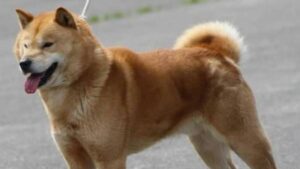
Discover the unique traits of the six native Japanese dog breeds, the Nihon Ken, and learn to identify them at dog shows.
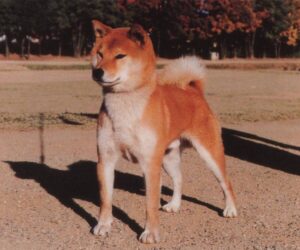
Judging the Shiba Inu: Explore the 10,000-year-old breed’s form, function, and spirited temperament, closely linked to the Asian Gray Wolf.
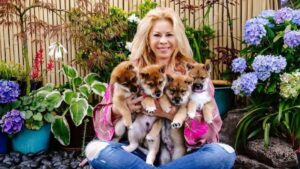
Explore the journey of a Breeder/Owner Handler in the world of purebred dogs, from mentorship to cherished victories and heartfelt moments.

Michelle Gori is the breeder behind the Sierra Ohkami Shikoku. Read about the kennel’s beginnings, the champions, the puppies, and much more!

Explore the journey of a Breeder/Owner Handler in the world of purebred dogs, from mentorship to cherished victories and heartfelt moments.

Interview with Non-Sporting Group Breeder Lori Pendergast – My kennel name is Pendragon Shiba Inu. I keep 8–10 dogs most of the time, but
The best way to ensure a long and happy relationship with a purebred dog is to purchase one from a responsible breeder. Not sure where to begin?
Contact the National Parent Club’s Breeder Referral Program, which is listed on the AKC Breeder Referral Contacts page.
